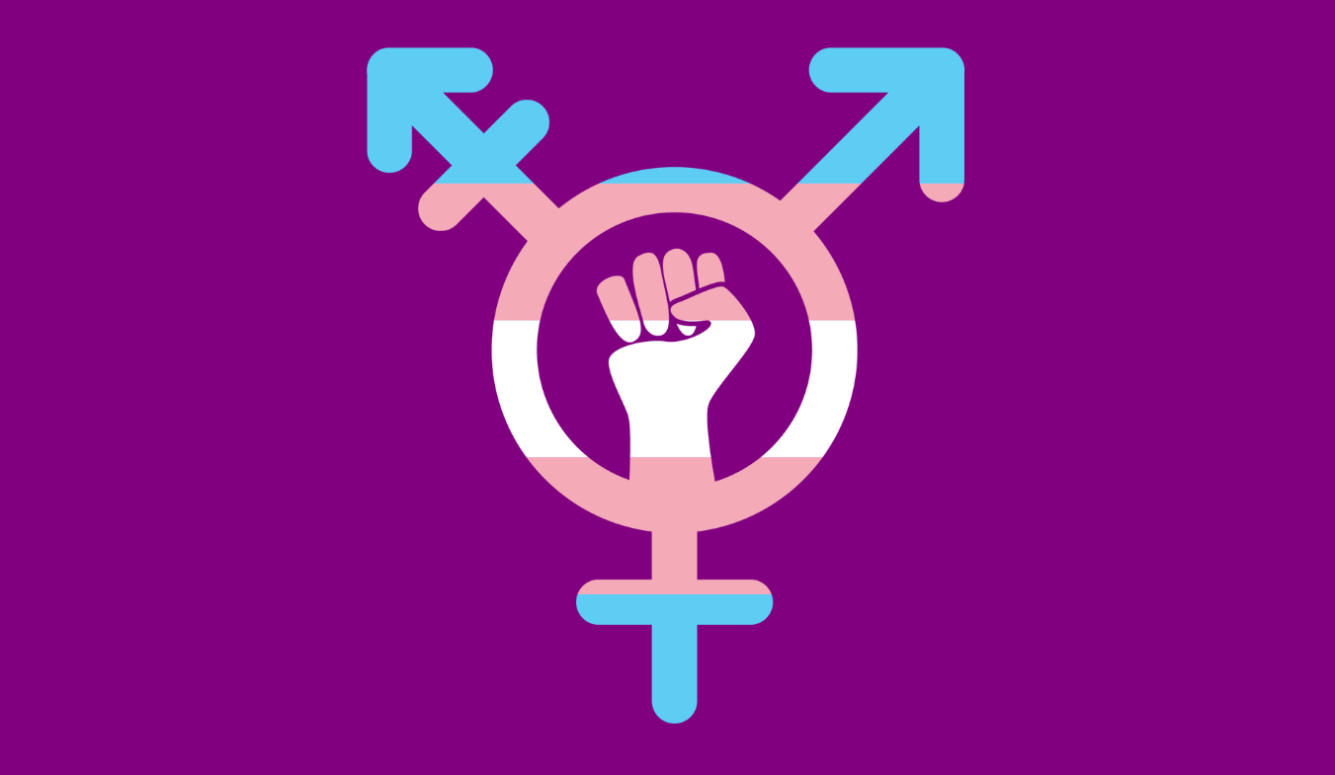Transgenderism
What Even Is ‘Trans’?
A new book on gender leaves no space for gender non-conformity that is not defined as 'trans'

A review of What Even is Gender? by R. A. Briggs and B. R. George (Routledge, 2023).
If you’ve been remotely tuned in to the culture wars, you’ll know that there’s been a bit of trouble lately involving gender—with questions like “What is a woman?”; “Should legal sex be a matter of self-identification?”; and “Do children know who they are when it comes to gender?” at the forefront.
A new book written by two nonbinary trans people—one a professor of philosophy—promises a “fresh direction” for debates about gender, by suggesting that gender is not one thing but many different things, and that those firing shots across the trenches of the culture war are therefore mistaken to think that they are shooting at each other.
This is not a book that gender-critical people will find easy to read. The authors describe an “apparent conflict” between feminist and trans views of gender and claim that conservatives exploit this conflict for their own ends, citing the US-based radical feminist group Women’s Liberation Front (WoLF)—which they describe as “anti-trans”—and its alleged ties to anti-gay and anti-abortion groups. They refer to gender-critical philosophers Rebecca Reilly-Cooper, Alex Byrne, and Kathleen Stock as “transphobic authors.” They refer to “TERF rhetoric”—using a term some of us radical and gender-critical feminists consider a slur. They declare that Caroline Criado-Perez is “no friend of trans people.” They present sexology research by established academics on routes to trans identification as merely a dismissal of trans people’s “gender feels” (more on those below). And they use the University of Sussex—Stock’s ex-employer—as a hypothetical example of a university at which “the entire … faculty resigns.”
Such hostility notwithstanding, this may be a book that gender-critical people can get something out of. We philosophers have been somewhat hopeful about this book; Briggs’s considerable philosophical talent gave us cause for optimism that there would finally be a charitable and constructive contribution from the trans activist side of the philosophical divide. That optimism was only partially misplaced. The book may not be “charitable,” but I think we can settle for “constructive.”
The book’s target is “the gender system.” The gender system imposes “non-consensual gendering” by assigning everyone a gender at birth. Because everyone is assigned a gender at birth, everyone is a victim of the gender system. This is an important key to understanding what the “transfeminism” invoked in their book is supposed to be; and it will enable us to assess whether it is coherent, and whether it is a superior alternative to (just) feminism. Briggs and George, along with many third wave and contemporary feminists, are interested in everyone affected by the gender system—which is really everyone: women, yes (yawn), sexual orientation minorities, transgender people, men. Precisely because the constituency of that project is so large, no questions of group boundaries, “gatekeeping,” inclusion/exclusion, etc. arise. Second-wave feminists cared about the primary victims of that system, namely women, and focused their efforts on liberation of and/or equality for those victims. Women get barely a mention in Briggs and George’s book—one could easily come away with the impression that gender is something that only affects trans people.
The most helpful contribution of What Even Is Gender? is its skepticism about the catch-all concept of gender identity. It offers a more fine-grained analysis of different phenomena that the authors call “gender feels.” Gender feels are attitudes a person has towards her relationship to what the authors call “gendered traits,” which are objective aspects of “our shared material and social reality.” They carve this reality up roughly into three “buckets”: biology (or sex characteristics); gender expression, role, or behavior (masculinity/femininity); and category membership (man/woman/nonbinary). A person can have “gender feels” about any of these three things, in any combination. This way of thinking about things makes space for different types of trans people: those who want to change their bodies; those who want to change their presentation/expression; and those who want to change how they are categorized—as well as any further combination of these things.
Thinking about transness in terms of “gender identity” obscures the differences between these different types of trans people by suggesting that there is something explanatory underpinning these “gender feels” and creating an expectation that all three distinct types of “feels” will present simultaneously. In the gender identity model, we might expect a biologically male trans person to want to change his body to acquire female sex characteristics, and to present himself in a feminine way, and to say that he’s a woman and request “she/her” pronouns. This expectation legitimizes a number of criticisms that Briggs and George reject, including the objections that a person transitions because they endorse sex stereotypes, or that a person thinks that gender non-conformity makes them trans. (Although personally I can’t see how their model avoids this latter conclusion—on which more later).
By introducing norms into their picture, Briggs and George claim to be able to make many of the same critiques of gender that feminists have wanted to make. Norms link the three different types of “gendered traits,” and can also create links within each category of trait. A female person (biology) will be expected to be feminine (gender expression) and to identify with the label “woman” and the pronouns “she/her” (category). Different aspects of female biology will be expected to present together (e.g., breasts with a vulva); different aspects of feminine behavior will be expected to present together (e.g., keeping one’s bodily postures and movements contained with speaking quietly and not interrupting). By working to detach and decouple each of the three “buckets” of gendered traits, norms that are harmful to women are dissolved, and norms that are harmful to trans and intersex people are dissolved at the same time. The “transfeminist,” then, can do everything the feminists can do, and can support trans rights and trans liberation.
But can she, really? There are at least three problems with Briggs and George’s proposal. The first is that they do not reckon with the genuine tension between feminism and trans activism. In order to decouple sex from gender understood as expression, role, and/or behavior, feminists need to be able to insist that there is nothing more to being a woman than being female. A female person can be absolutely any way, without compromising or undermining her status as a woman. Women’s liberation from gender in the sense of expectations of femininity requires a minimalist definition of “woman”: she is female and that is all. But this is incompatible with the claim that membership in the category “woman” can be fully decoupled from expectations about femininity and from biology, and instead constitute something that is fully voluntary or self-curated. Either a woman is just an adult human female with any kind of expression, role, or behavior, or a woman is anyone who identifies as a woman, for any reason. It can’t be both.
The second reason to think Briggs and George’s “transfeminist” proposal can’t do everything a feminist proposal could do is that they pay incredibly selective attention to harmful and unjust social structures. Their approach to medical and surgical transition is cavalier: they complain about trans people being made into their own “internalized gatekeepers” by being encouraged to believe that transition is legitimate only if they can locate a gender identity understood as a “mysterious gendered essence.” They talk about the medical transition of children as being a matter of “autonomy, self-authorship, or freedom.” They recommend experimenting with hormones: people shouldn’t have to worry about figuring out whether they are trans, but rather, one should just try “hormone replacement for a couple of weeks or a couple of months and see how one feels about that.” There seems to be no awareness of the harms of medical and surgical transition, or any critical reflection on the social structures that might cause a person to think they need to change their body. Their approach to transition puts it more in the category of cosmetic surgery—if a person would be “happier” with a different body, then they should get a different body. But feminists have long argued that we should change the society that makes people feel that their bodies are not good enough, rather than changing the people who are told by society that their bodies are not good enough.
Third, no feminist should be prepared to say that any non-feminine woman is trans. We want to normalize gender non-conforming behavior, not re-pathologize it in a new way. But it’s not clear that Briggs and George’s disambiguation of gender identity into distinct “gender feels” about categories of gendered traits leaves any space for gender non-conformity that isn’t transness. Presumably, one can be trans as a matter of all/any of the gender feels, but that implies that if a female person has “gender feels” that femininity is wrong for her that makes her trans. We can’t resolve this by saying that it’s only gender non-conformity combined with identification with a specific category that makes for transness, because their whole point was to decouple the three things you can have “gender feels” about.
I find it plausible that “trans” could refer to “feels” about biology in the way the old word “transsexual” used to indicate. Gender non-conformity could be protected for everyone (trans and non-trans alike) under the attribute “gender expression,” as part of sex discrimination law. For feminist reasons, it shouldn’t be seen as a form of transness. That just leaves “feels” about category membership. But these “feels” likely have no content: they might now be based on three-way associations between biology, behavior, and category, but one of the authors’ main points was that these three things can and should be kept separate. And it is precisely category membership that gender-critical feminists and trans activists are fighting over. Gender-critical feminists don’t want men to claim to be women, don’t want men to be able to change their legal sex to “female,” don’t want men including themselves in social spaces designated women-only. If we think “category feels” should not be respected then we should reject “category feels” as a form of transness too. Thus, two out of Briggs and George’s three “feels” about gender may not be “feels” that suffice to define transness at all.





